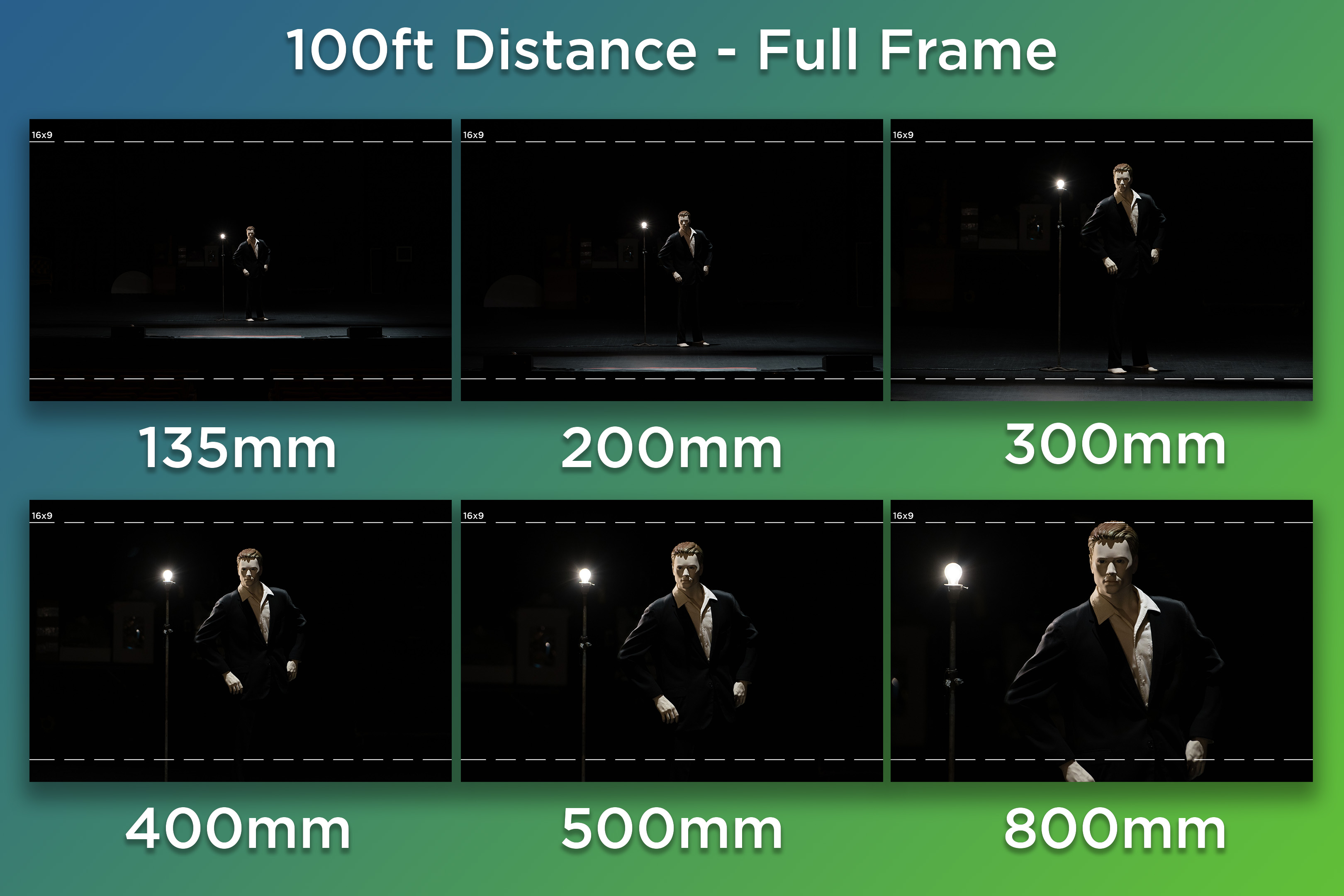Equipment
Focal Length Guide for Shooting in Large Spaces

There can be a lot of guessing involved when choosing gear for an unfamiliar venue. The techs at LR are consistently asked questions about the best focal length to use for an event. There are focal length calculators online like this one that can help determine which is right for you, and this visual guide can hopefully serve as another helpful resource.
Because many of our customers ask about shooting performances or similar events in a theater, we have chosen the historical Orpheum Theatre here in Memphis for our illustration. This theater seats 2,400 people, is the home of touring Broadway productions, and hosts performances including ballet, concerts, and cultural events.

We have taken photographs with various focal lengths at four different distances from the stage spanning the orchestra pit to the front lobby. These images were taken on a full frame sensor. If you are shooting with a smaller sensor or in crop mode be sure to adjust accordingly, and take a look at the bottom of the page for a link to crop frame visual examples. We have also left a visual guide for the 16×9 framing.
The first set of images was taken from 20ft in front of the subject, just behind the orchestra pit. The model is life size and positioned about mid stage.

The 24mm length is great for plays or any event where capturing the whole stage or a group of people is important. With 50mm a full body shot of multiple people is possible. Somewhere between 135mm and 300mm is a reasonable place to stop if you really need to capture a close-up. The reason being that unless you are shooting something or someone that is static it will be very hard to follow your subject when zoomed in so close. On top of that, many lenses of that length will not perform well in low light and you may end up with a blurry image and poor composition.
Suggested lenses: 24-70mm f/2.8, 70-200mm f/2.8

At 50ft from the subject, about 8 rows back, the 70-200mm range still works. The only shots you won’t get with that length are an ultra-wide of the stage and a close-up of a face.
Suggested lenses: 70-200mm f/2.8, 300mm f/2.8

The third camera position is 100ft (about 25 rows) from the subject, which in this theater was right at the entrance and the farthest point in the room. This is a common place to set up a stationary camera that won’t obstruct anyone’s view. If this camera’s purpose is to capture the whole stage, the 70-200mm range is still safe.
Suggested lenses: 70-200mm f/2.8, 200-400mm f/4

Once we made it to the back of the theater we decided to push the test a little further back for those of you working in larger venues or who just love big lenses. 180ft was the longest distance from the model putting the camera right up against the lobby doors. I can’t recommend recording or photographing from this distance, but if you do be sure used a tripod.
Final Recommendations
When shooting during a performance or any event with an audience it’s important to go unnoticed as much as possible. Some obvious ways to do this is to stay low or toward the edges and back of the room and avoid using a flash or any on-camera lighting. This means using a lens that can shoot long and in low light. I also recommend using zoom lenses to minimize the time spent moving around.
The 70-200mm range seemed the most helpful during this test and would pair well with a 24-70mm or a wide prime lens for most applications. For closer shots I would normally recommend a fast prime in the 300mm range.
Here are some links for recommended lenses:
Canon: 24-70mm f/2.8L IS II, 70-200mm f/2.8L IS II, 300mm f/2.8L IS II, 200-400mm f/4L IS w/1.4x Extender
Nikon: Nikon 24-70mm f/2.8E ED AF-S VR, Nikon 70-200mm f/2.8G AF-S VR II, Nikon 300mm f/2.8G AF-S VR II, Nikon 200-400mm f/4G AF-S VR II
Here is a visual catalog of each focal length at each distance in full frame, crop frame, super 35, and 16×9.
Sarah McAlexander & Kris Steward
Lensrentals.com 2016
Author: Sarah McAlexander
I’m Sarah. I have a BFA in Photography from the University of Memphis. I’ve been shooting professionally for over 6 years. When I’m not working here or freelancing, I enjoy yoga and traveling.
-
Gabriel McKee
-
Ralph Hightower
-
Sinarmas Rentalmobil
-
mbemowski
-
BernhardAS




